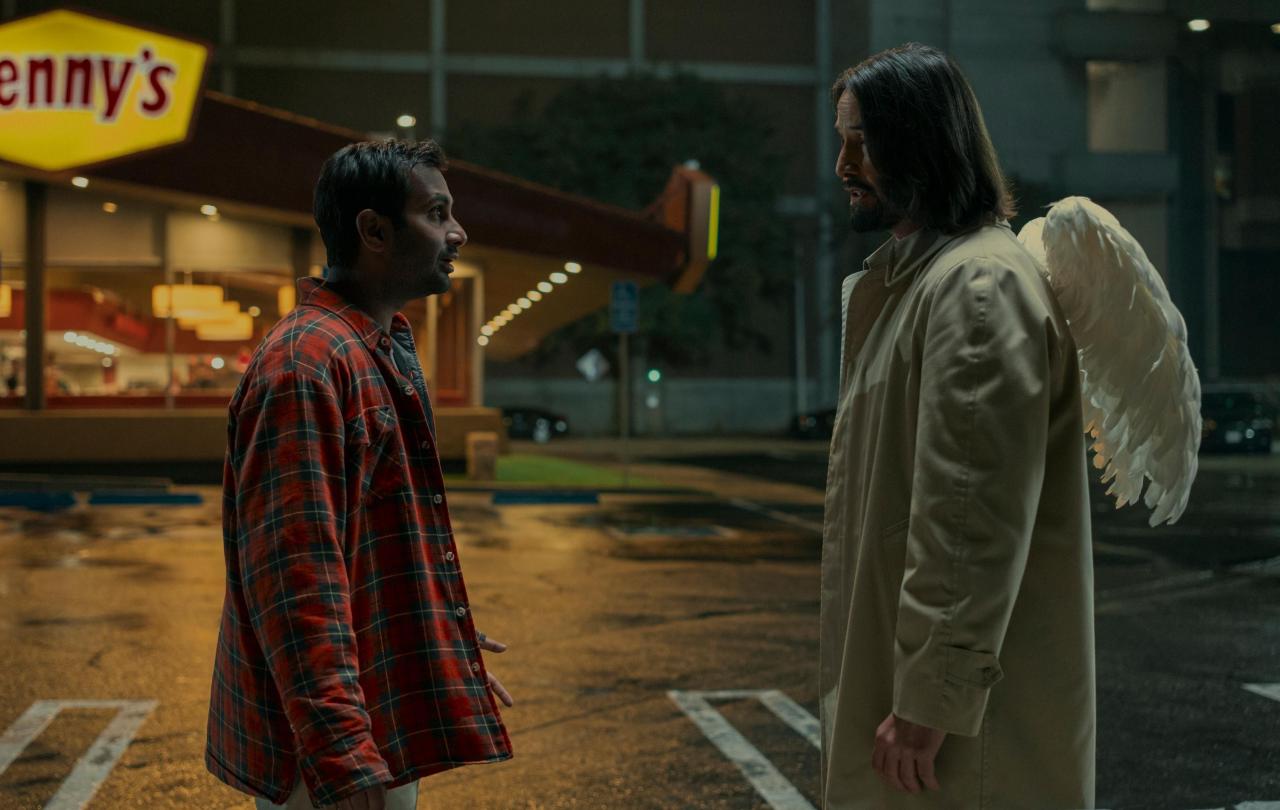
Once again, the UK parliament is set to debate the question of legalizing euthanasia (a traditional term for physician-assisted death). Political conditions appear to be conducive to the legalization of this technological approach to managing death. The case for assisted death appears deceptively simple—it’s about compassion, respect, empowerment, freedom from suffering. Who can oppose such positive goals? Yet, writing from Canada, I can only warn of the ways in which the embrace of physician-assisted death will fundamentally change the practice of medicine. Reflecting on the last 10 years of our experience, two themes stick out to me—pressure, and self-deception.
I still remember quite distinctly the day that it dawned on me that the moral ethos of medicine in Canada was shifting dramatically. Traditionally, respect for the sacredness of the patient’s life and a corresponding absolute prohibition on deliberately causing the death of a patient were widely seen as essential hallmarks of a virtuous physician. Suddenly, in a 180 degree ethical turn, a willingness to intentionally cause the death of a patient was now seen as the hallmark of patient-centered doctor. A willingness to cause the patient’s death was a sign of compassion and even purported self-sacrifice in that one would put the patient’s desires and values ahead of their own. Those of us who continued to insist on the wrongness of deliberately causing death would now be seen as moral outliers, barriers to the well-being and dignity of our patients. We were tolerated to some extent, and mainly out of a sense of collegiality. But we were also a source of slight embarrassment. Nobody really wanted to debate the question with us; the question was settled without debate.
Yet there was no denying the way that pressure was brought to bear, in ways subtle and overt, to participate in the new assisted death regime. We humans are unavoidably moral creatures, and when we come to believe that something is good, we see ourselves and others as having an obligation to support it. We have a hard time accepting those who refuse to join us. Such was the case with assisted death. With the loudest and most strident voices in the Canadian medical profession embracing assisted death as a high and unquestioned moral good, refusal to participate in assisted death could not be fully tolerated.
We deceive ourselves if we think that doctors have fully accepted that euthanasia is ethical when only very few are actually willing to administer it.
Regulators in Ontario and Nova Scotia (two Canadian provinces) stipulated that physicians who were unwilling to perform the death procedure must make an effective referral to a willing “provider”. Although the Supreme Court decision made it clear in their decision to strike down the criminal prohibition against physician-assisted death that no particular physician was under any obligation to provide the procedure, the regulators chose to enforce participation by way of this effective referral requirement. After all, this was the only way to normalize this new practice. Doctors don't ordinarily refuse to refer their patients for medically necessary procedures; if assisted death was understood to be a medically necessary good, then an unwillingness to make such referral could not be tolerated.
And this form of pressure brings us to the pattern of deception. First, it is deceptive to suggest that an effective referral to a willing provider confers no moral culpability on the referring physician for the death of the patient. Those of us who objected to referring the patient were told that like Pilate, we could wash our hands of the patient’s death by passing them along to someone else who had the courage to do the deed. Yet the same regulators clearly prohibited referral for female genital mutilation. They therefore seemed to understand the moral responsibility attached to an effective referral. Such glaring inconsistencies about the moral significance of a referral suggests that when they claimed that a referral avoided culpability for death by euthanasia, they were deceiving themselves and us.
The very need for a referral system signifies another self-deception. Doctors normally make referrals only when an assessment or procedure lies outside their technical expertise. In the case of assisted death, every physician has the requisite technical expertise to cause death. There is nothing at all complicated or difficult or specialized about assessing euthanasia eligibility criteria or the sequential administration of toxic doses of midazolam, propofol, rocuronium, and lidocaine. The fact that the vast majority of physicians are unwilling to perform this procedure entails that moral objection to participation in assisted death remains widespread in the medical profession. The referral mechanism is for physicians who are “uncomfortable” in performing the procedure; they can send the patient to someone else more comfortable. But to be comfortable in this case is to be “morally comfortable”, not “technically comfortable”. We deceive ourselves if we think that doctors have fully accepted that euthanasia is ethical when only very few are actually willing to administer it.
We deceived ourselves into thinking that assisted death is a medical therapy for a medical problem, when in fact it is an existential therapy for a spiritual problem.
There is also self-deception with respect to the cause of death. In Canada, when a patient dies by doctor-assisted death, the person completing the death certificate is required to record the cause of death as the reason that the patient requested euthanasia, not the act of euthanasia per se. This must lead to all sorts of moments of absurdity for physicians completing death certificates—do patients really die from advanced osteoarthritis? (one of the many reasons patients have sought and obtained euthanasia). I suspect that this practice is intended to shield those who perform euthanasia from any long-term legal liability should the law be reversed. But if medicine, medical progress, and medical safety are predicated on an honest acknowledgment about causes of death, then this form of self-deception should not be countenanced. We need to be honest with ourselves about why our patients die.
There has also been self-deception about whether physician-assisted death is a form of suicide. Some proponents of assisted death contend that assisted death is not an act of deliberate self-killing, but rather merely a choice over the manner and timing of one's death. It's not clear why one would try to distort language this way and deny that “physician-assisted suicide” is suicide, except perhaps to assuage conscience and minimize stigma. Perhaps we all know that suicide is never really a form of self-respect. To sustain our moral and social affirmation of physician-assisted death, we have to deny what this practice actually represents.
There has been self-deception about the possibility of putting limits around the practice of assisted death. Early on, advocates insisted that euthanasia would be available only to those for whom death was reasonably foreseeable (to use the Canadian legal parlance). But once death comes to be viewed as a therapeutic option, the therapeutic possibilities become nearly limitless. Death was soon viewed as a therapy for severe disability or for health-related consequences of poverty and loneliness (though often poverty and loneliness are the consequence of the health issues). Soon we were talking about death as a therapy for mental illness. If beauty is in the eye of the beholder, then so is grievous and irremediable suffering. Death inevitably becomes therapeutic option for any form of suffering. Efforts to limit the practice to certain populations (e.g. those with disabilities) are inevitably seen as paternalistic and discriminatory.
There has been self-deception about the reasons justifying legalization of assisted death. Before legalization, advocates decry the uncontrolled physical suffering associated with the dying process and claim that prohibiting assisted death dehumanizes patients and leaves them in agony. Once legalized, it rapidly becomes clear that this therapy is not for physical suffering but rather for existential suffering: the loss of autonomy, the sense of being a burden, the despair of seeing any point in going on with life. The desire for death reflects a crisis of meaning. We deceived ourselves into thinking that assisted death is a medical therapy for a medical problem, when in fact it is an existential therapy for a spiritual problem.
We have also deceived ourselves by claiming to know whether some patients are better off dead, when in fact we have no idea what it's like to be dead. The utilitarian calculus underpinning the logic of assisted death relies on the presumption that we know what it is like before we die in comparison to what it is like after we die. In general, the unstated assumption is that there is nothing after death. This is perhaps why the practice is generally promoted by atheists and opposed by theists. But in my experience, it is very rare for people to address this question explicitly. They prefer to let the question of existence beyond death lie dormant, untouched. To think that physicians qua physicians have any expertise on or authority on the question of what it’s like to be dead, or that such medicine can at all comport with a scientific evidence-based approach to medical decision-making, is a profound self-deception.
Finally, we deceive ourselves when we pretend that ending people’s lives at their voluntary request is all about respecting personal autonomy. People seek death when they can see no other way forward with life—they are subject to the constraints of their circumstances, finances, support networks, and even internal spiritual resources. We are not nearly so autonomous as we wish to think. And in the end, the patient does not choose whether to die; the doctor chooses whether the patient should die. The patient requests, the doctor decides. Recent new stories have made clear the challenges for practitioners of euthanasia to pick and choose who should die among their patients. In Canada, you can have death, but only if your doctor agrees that your life is not worth living. However much these doctors might purport to act from compassion, one cannot help see a connection to Nazi physicians labelling the unwanted as “Lebensunwortes leben”—life unworthy of life. In adopting assisted death, we cannot avoid dehumanizing ourselves. Death with dignity is a deception.
These many acts of self-deception in relation to physician-assisted death should not surprise us, for the practice is intrinsically self-deceptive. It claims to be motivated by the value of the patient; it claims to promote the dignity of the patient; it claims to respect the autonomy of the patient. In fact, it directly contravenes all three of those goods.
It degrades the value of the patient by accepting that it doesn't matter whether or not the patient exists.
It denies the dignity of the patient by treating the patient as a mere means to an end—the sufferer is ended in order to end the suffering.
It destroys the autonomy of the patient because it takes away autonomy. The patient might autonomously express a desire for death, but the act of rendering someone dead does not enhance their autonomy; it obliterates it.
Yet the need for self-deception represents the fatal weakness of this practice. In time, truth will win over falsehood, light over darkness, wisdom over folly. So let us ever cling to the truth, and faithfully continue to speak the truth in love to the dying and the living. Truth overcomes pressure. The truth will set us free.





